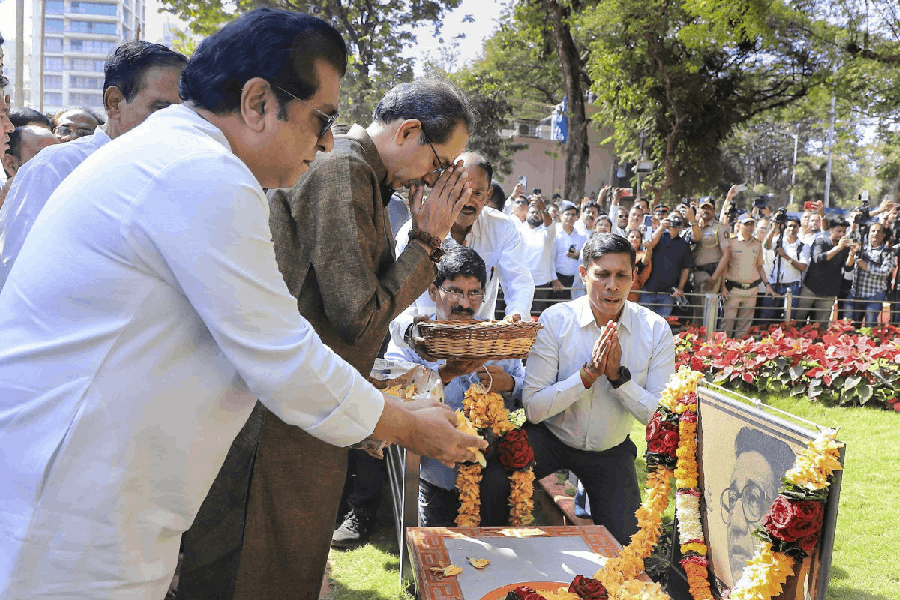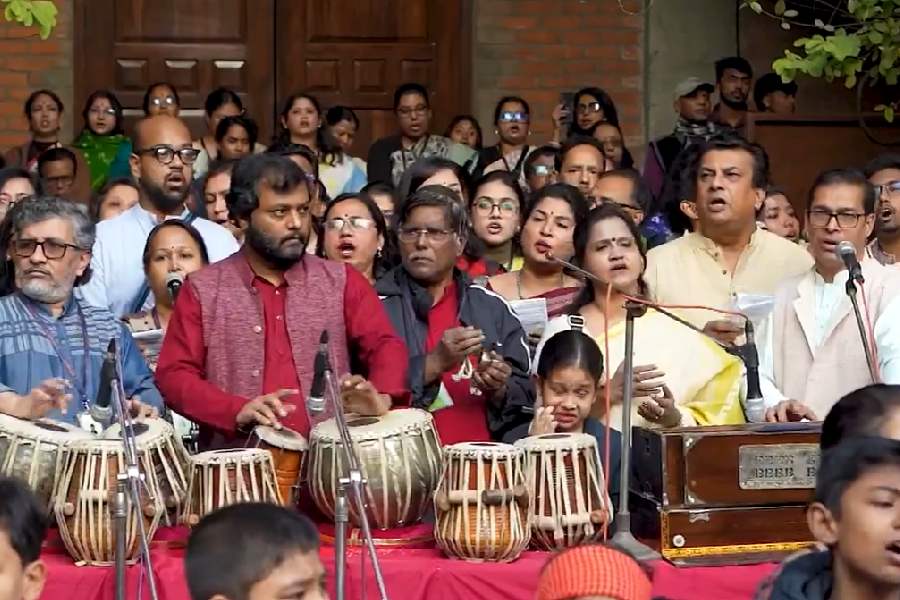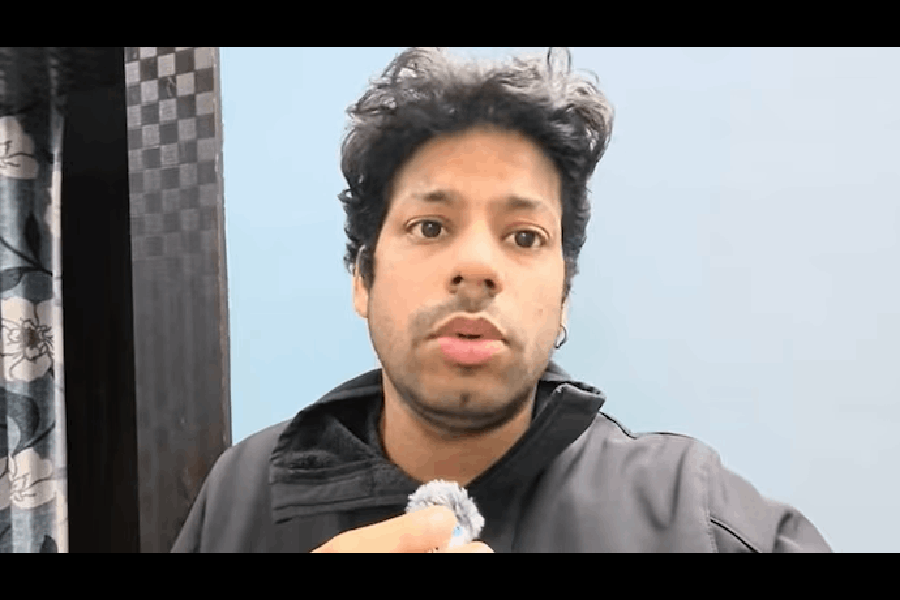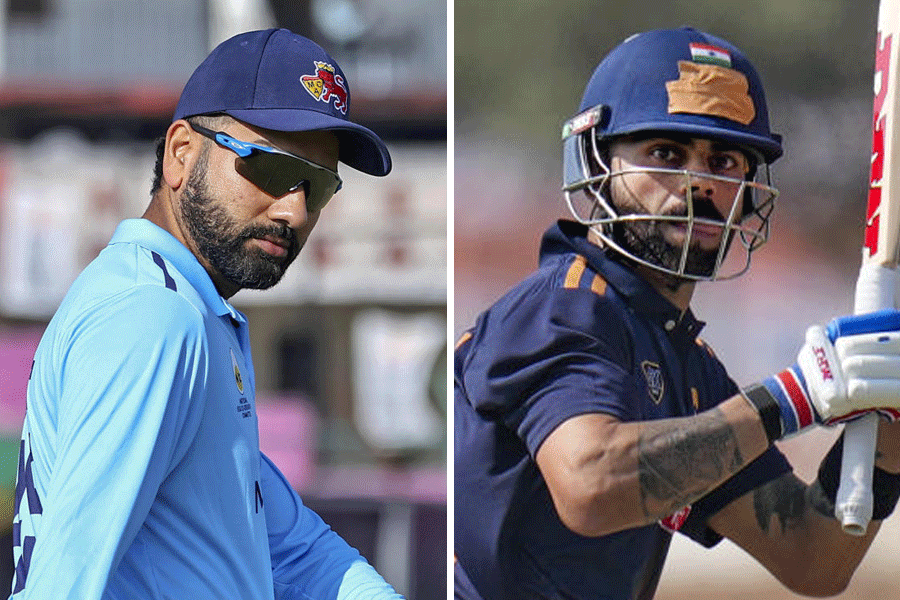 |
Bhubaneswar, Jan. 8: The Odia film industry has turned into a “remake machine”.
At least eight out of every 10 films being made are either frame-to-frame copies or a mix of released Telugu, Tamil and Hindi films. While many filmmakers deny having been “inspired” or remade films from other languages, others say the audience demands it and this is the reason they go for box-office hits in other languages.
Some of the biggest blockbusters in the past few years have been remakes of superhit Telugu or Tamil movies.
The 2004 Odia film I Love You, considered the biggest hit at the box-office in terms of collections, was a remake of Telugu film Nuvvu Vastavanni. the 2007 hit Pagala Premi was an exact copy of well-known Telugu film Arya, with even the costumes, sets and music being almost completely same in the two movies.
The director of both the Odia versions, Hara Patnaik, says that though it may be hampering the creative content of the industry, filmmakers are after all bound by the wishes of their viewers.
“It is true that most of the films today are indeed remakes of south Indian hits or Bollywood blockbusters. But in an industry like ours, where producers are not easy to find, we have to consider the profitability of the story. When we know that a particular story has a strong appeal among viewers across the country and even our state, the production is assured that the risk factor in remaking the project in Odia is low. Despite the language barrier, Telugu and Tamil films are widely popular in Odisha,” said Patnaik.
The popularity of south Indian films is evident from the fact that even their dubbed versions are regularly screened on local television channels.
The satellite rights of the films come for just around Rs 2 lakh and local translators turn into scriptwriters by merely rearranging the dialogues and lyrics of songs of the Telugu or Tamil film into Odia. These dubbed versions draw a high viewership and thus bring a number of advertisements to the television channel that spends just about Rs 4 lakh, which includes acquiring of rights, payment to dubbing artistes, singers and translators.
Though this is an easier and cheaper way to make money out of hit cinema from other regions, the rate of producing remakes has become unbelievably overwhelming over the years.
This gives the impression that there is a dearth of creativity in the Odia film industry. It also shows that there are either no imaginative scriptwriters or the film audience in Odisha has shunned the idea of watching Odia literature, culture and lifestyle on the silver screen.
At least 10 of the films released in 2008 and 2009 were remakes of Hindi and south Indian films. In 2010, the number of exact copies went up to eight while the remaining were a mix of two or more films. Swayamsiddha and Pahili Raja were among the very few films that had original scripts. There were five remakes last year.
The biggest hit of 2011, Balunga Toka, was quite similar to 7/G Brindavan Colony. But director Sudhakar Basant disagrees. He says, “I have never been inspired by south Indian films.”
The scenes and costumes of Basant’s upcoming film Something Something also reminds of some south Indian movies. However, Basant refutes the charges.
According to Odia film critic, researcher and author of many books on Odia film history, Surya Deo, the concept of remaking films from other languages into Odia began in the late 70s.
“In 1977-78, when the Andhra Pradesh government announced a scheme to provide subsidy to all its filmmakers, no matter which language they made their films in, many Telugu producers ventured into Odisha and created scene-to-scene remakes of old Hindi and Telugu films,” says Deo.
“The first full-fledged remake was E Nuhen Kahani from Hindi film Chhoti Behen. The trend caught up soon and many Hindi films were remade by Odia filmmakers too, until the 90s. A few copyright issues bothered the filmmakers for sometime. But the biggest such issue was with the film Suhaag Sindoor (1996-97), which was a copy of a Tamil film. The producer of the original film sued the team of the Odia version for which the producer had to pay about Rs 20 lakh, after which he quit filmmaking. From then on, complete remakes were being made only after obtaining the rights. However, the hodge-podge trend is also on, which does not even need rights,” he says.
According to Deo, the typical costume and lifestyle shown in the films must at least reflect Odisha. “Sadly, every minute detail is cut and pasted into the remakes and this can seriously affect our culture,” he said.
Some of the most memorable Odia films such as Mala Janha and Ka used to be adaptations from Odia novels. But the trend of remakes has upset many noted filmmakers because they believe that producing such films is harming the creative culture of the Odia film industry.
“There is nothing innovative or creative in just copying a theme or scene from another film and inserting it in an Odia film. There is a lot in the culture, values, ethos and lifestyle of our state that can be explored by today’s filmmakers,” said actor Sarat Pujari.
“We did not give any award for screenplay for 2010 since most of the nominations were remakes,” said Pujari, who is also the president of Odisha Sangeet Natak Akademi.
“Present day films are made for business purposes and before investing their finances, the producers prefer watching videos of existing hits of other regional cinema. But the product ends up being a joke, which is not healthy for our cinema. The problem is that today, directors and producers feel that the viewers will not accept Odia content on screen and so they prefer to use even Hindi or English words in the title to attract the audience. This is illogical,” said filmmaker Prashant Nanda.
Veteran filmmaker Nirad Mohapatra feels that though to a certain extent, those who consider filmmaking a business are justified in selecting blockbuster scripts, none of them can match the films that used to be made till the 70s.
“There were many novellas that inspired filmmakers. There was no dearth of original scripts. Technically the films are better today but there is only quantity at the cost of quality,” he said, adding that the scenario is same with almost all film industries in the country.
“Hindi films and other regional cinema are also inspired from Hollywood or other hit films of different regions,” said Mohapatra.











